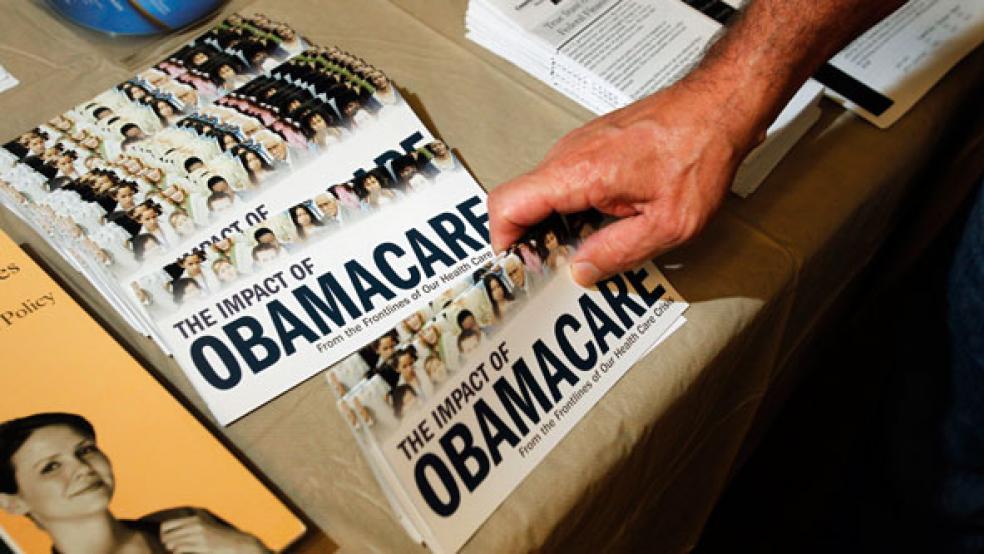The opening act of the Affordable Care Act is a bizarre one. The health insurance exchanges created by the law are open for business, even though much of the federal government is not.
Now that the exchanges are live, we’ll start to get a sense of how they will change the health care system – though it’s too early to base any judgments on the first day’s reports of technical problems and heavy Web traffic. Over time, we’ll see not only how the technology performs but also how the human element plays out: what consumers choose when faced with so many choices of plans and so many price points. Will they choose wisely or blunder into unsuitable policies?
There is a precedent worth examining in the form of private insurance exchanges, which cover roughly 1 million Americans today and could surge to up to 40 million by 2018, according to Accenture Research. Like the state-run exchanges, the private versions offer several choices that vary in coverage, premium levels and out-of-pocket expenses. But conflicts may arise when myriad options are presented. Participants may default to the cheapest plans, which may offer less coverage.
Aon Hewitt, the benefits consultant that runs a private exchange for large employers, found that "some 46 percent of roughly 100,000 people enrolled last year bought less coverage than they had previously." Over the past five years, 80 percent of customers on another exchange for small-business employees "changed their coverage, with 90 percent of those choosing less-expensive plans."
With the uninsured buying insurance from public exchanges, there's no baseline for comparison, so saying that they will obtain less coverage and just focus on cost is a moot point. But what will happen to small business workers looking to buy plans next year? Will they compromise on coverage? It's conceivable that the 30 million expected to gain coverage will also gravitate towards the most highly promoted plans or eventually be overwhelmed by plans with trade-offs such as lower premiums for higher out-of-pocket costs.
Ultimately, the jury is still out on whether Americans will pick plans that are most effective in covering all of their health care needs.
Bad policy choices will be costly, though. The average consumer will lose $611 a year by picking the least-effective options, according to a study released Monday by the Columbia University Business School.
While it's incredibly difficult to substantiate that number considering the ACA exchanges have no historical data, consumer confusion will be a bug-a-boo.
HEALTH CARE INEQUALITY MAY GET WORSE
Even more problematic is the possibility that the incendiary politics behind the rollout of the ACA may actually lead to worse health care inequality – and to many who desperately need health care coverage still finding it’s not available to them.
According to a recent study by the Commonwealth Fund, a nonprofit group dedicated to "a high performance health system," failure by several states to expand their Medicaid programs will seriously compromise their ability to upgrade services for the poor.
For years, it's been a fiscal struggle for states to foot the bill for their growing Medicaid rolls. Aided by federal money, state governments have been able to keep their programs going, along with introducing cost-saving measures such as managed care. The ACA set aside more federal dollars for states so that they could expand their Medicaid programs. But since the Supreme Court ruled last year that the states weren't required to take the federal funds, several governors have rejected the aid.
Although the federal Medicaid funding to the states was generous – 100 percent of the expansion costs for the first three years, then 90 percent – governors refusing the federal money were on the record as opposing the general principle of the ACA and citing pressures of the additional fiscal burden.
Only two dozen states are expanding their Medicaid programs. All of the West Coast states and most of the Northeast (except for Maine and New Hampshire) are expanding, providing care for nearly 4 million uninsured. Nearly all of the southern states, Great Plains (except for North Dakota) and mountain states (except for Colorado, New Mexico and Arizona) are not expanding. That impacts nearly 5 million uninsured.
HOW THE HEALTH CARE DISPARITY MAY WIDEN
The ACA will cover families who are not considered impoverished under federal thresholds and provide subsidies for those with incomes up to 400 percent of the federal poverty guidelines. A family of four making less than $31,800 would normally qualify for the federal program. If those who fall below the ACA threshold can't receive Medicaid, though, then the gap will widen between the insured and uninsured.
Commonwealth ranked each state based on access and affordability; prevention and treatment; potentially avoidable hospital use and "healthy lives." Hawaii, Wisconsin and Vermont scored the highest.
Ironically, the states that had overall high rankings for their health care coverage for poor populations will largely accept additional federal funds, while many of the states scoring poorly in the Commonwealth study will likely get worse or stay the same on those measures after refusing Medicaid expansion. Not surprisingly, the states with the worst scores in the Commonwealth rankings, including Alabama, Louisiana and Mississippi, also have had the highest historical poverty rates.
According to Dr. David Blumenthal, president of the Commonwealth Fund:
We know that insurance coverage, including Medicaid, improves access to care and results in improved health for previously uninsured people. States skipping expansion will also miss an opportunity to lower the costs of uncompensated care for their hospitals and forgo an infusion of federal dollars for traditionally underserved and rural areas. Uneven implementation of the ACA, therefore, could increase preexisting disparities in the health and health care available in high- and low-performing areas of the U.S.
WORRYING ABOUT FUTURE COSTS
The larger dilemma, though, which the mostly Red State governors have cited, is the increasingly difficult burden of Medicaid itself. Like most of American health care, its costs have been steadily rising over time. Medicaid is also the only public program of last resort for those funding private long-term care expenses; Medicare won't cover nursing home bills.
With an aging population, these costs are sure to soar. In New Jersey, for example, Medicaid expenditures are expected to consume half of the Garden State's budget by 2040. And every state is in that leaky boat.
Although the ACA funds eased the Medicaid funding shortfall for many states, costs were on an upward trajectory long before the ACA. According to an Urban Institute study, Medicaid expenses were expected to rise some $68 billion over the next decade – even if no state accepted the ACA funds.
What if all states opted for Medicaid expansion funds? A total of $18 billion could be saved.
Much of the funding dispute, however, is dynamic. If the ACA proves to be popular and efficient in providing greater health insurance access overall, more political pressure will be put on the "refusing" states to accept the Medicaid funds. But the more daunting challenge is to make all medical care fiscally sustainable in the face of a reduction in the working population and increase in retirees. While geography is destiny when it comes to health care, demographics casts an even bigger shadow.







